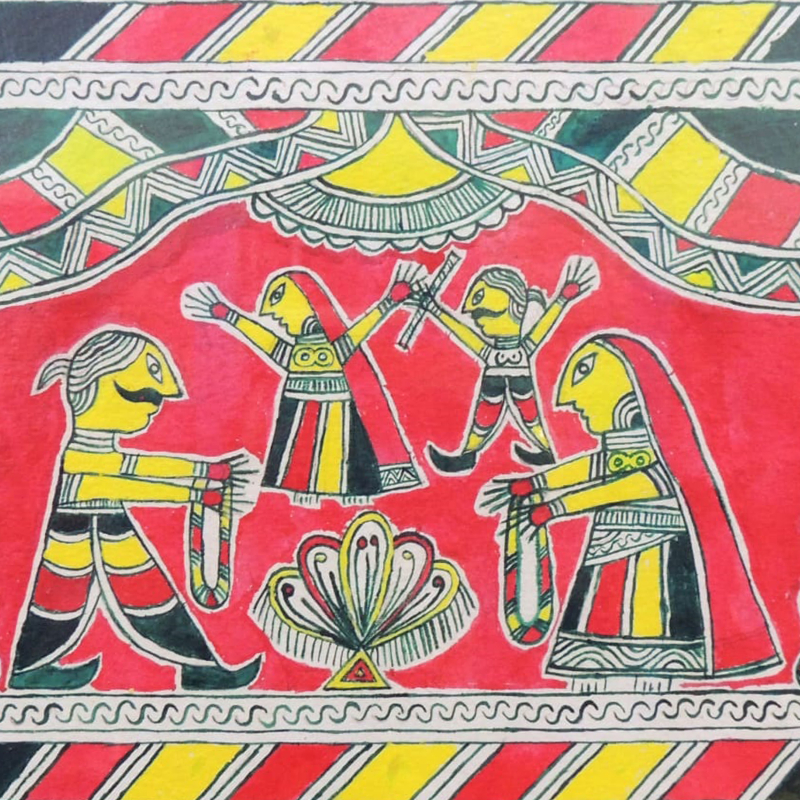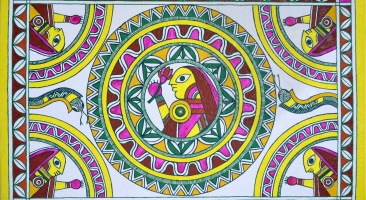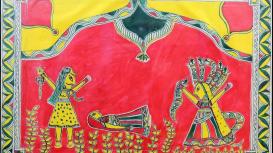Angika or Manjusha, as it is commonly known, is a story-based art form of Ang Pradesh, present-day Eastern Bihar. Today this art form is practised mostly in the Bhagalpur district of Bihar, and in other regions of the state as well. Manjusha art is associated with a festival known as Bishahari Puja, and is based on the folklore of ‘Bihula-Bishahari’. Bishahari Puja is celebrated in eastern Bihar and some parts of Assam and West Bengal to appease Goddess Bishahari or Manasa Devi, as locally known. Manjusha paintings were done on a ceremonial box during this puja. Again, Manjusha paintings were also done on the occasion of kalratri, the first night after a wedding. Today, the art form is practised all around the year and has evolved significantly from its original form.
The module focuses on tracing the origin of this art form by understanding the connection with Bishahari Puja and the folklore of Bihula-Bishahari. The evolution of this art form, over the years, has also been studied in terms of its style, materials, medium and colour palette.



